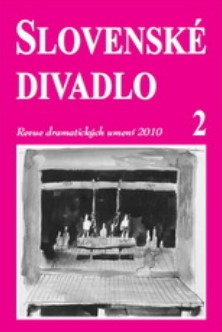Integrácia tradičného bábkarstva v súčasnom divadle a bábkovosť v modernom divadle
The integration of traditional puppetry in contemporary theatre and the “puppetness” in new theatre
Author(s): Ida Hledíková- PolívkováSubject(s): Theatre, Dance, Performing Arts, Cultural history
Published by: Ústav divadelnej a filmovej vedy SAV
Keywords: Puppetry; Theatre; marionette theatre; Eduardo de Paiva Souza; staging; dance;
Summary/Abstract: Puppetry is usually identified with the old-fashioned idea of puppet theatre as the imitation of classical – drama or opera – theatre. This convention was topical in the 17th – 19 century, with the dominance of marionette theatre in baroque setting in the countries of Central and Western Europe. Such model of theatre was definitely outdated in the early 20th century, but the stereotype has remained. Another stereotype that is still kept alive is that especially children are target audience of puppet theatre. History reveals that puppets and later puppet theatre were developed in different historical contexts and children began to be the target audience only in the 19th century Germany. These two stereotypes held back its development. At the end of last year, the author spoke on modern trends in European puppet theatre and giving the examples of Janos Palyi or Tomáš Dvořák documented the efficiency of combining modern contents with the citations from puppet traditions at the International Conference of Stage Animation hosted by the University of Tampere in cooperation with the Commission for the Research of Puppet Theatre UN IMA and The Centre for Research as Practice in Theatre in Tampere. Eduardo de Paiva Souza (Dudo Paiva) is for her an example that shows the viability and inspiration of modern thinking and brings together animation with the distinct visual characteristics of movement while using the dramatic methods in the environment of puppet theatre. For the author of this study, the Austrian dance productions of Vivisector by Klaus Obermaier (direction, music, video) and Chris Haring (choreography) performed by four dancers was another memorable, inspiring and provocative experience in the field of puppetry. Fascinating staging which combines dance and computer animation screened on the bodies of the dancers. The form of production and its moral message that questions the affects of virtual world on one‘s life was a fascinating experience, which showed a futuristic combination of physical and virtual presence and left a feeling of uneasiness. New technologies have pushed further the visual and contentual aspect of the contemporary staging.
Journal: Slovenské divadlo
- Issue Year: 58/2010
- Issue No: 02
- Page Range: 130-138
- Page Count: 9
- Language: Slovak

